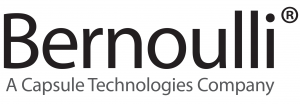Bernoulli Launches Respiratory Depression Safety Surveillance ( RDSS ) Solution
Revolutionary New Analytics Application to Address Significant Patient Safety Threat
Milford, CT—April 3, 2017—Bernoulli, the leader in real-time solutions for patient safety, has announced a revolutionary new application for the continuous monitoring of patients at risk of respiratory depression. Bernoulli’s Respiratory Depression Safety Surveillance (RDSS) solution utilizes comprehensive real-time data to help clinicians quickly recognize and respond to signs of respiratory distress. RDSS includes exclusive analytics with multi-variable thresholds—adjustable by the care facility—to identify clinically actionable events while significantly reducing the overall number of alarms communicated to remote and mobile clinicians, mitigating the risk of alarm fatigue.
A Solution to a Growing Patient Safety Threat
More than half of medication-related deaths and 20,000 incidences of respiratory depression-related interventions annually are attributed to the delivery of opioids in a care setting, at a cost of approximately $2 billion per year to the U.S. healthcare system.1
Current monitoring practices are neither adequate nor comprehensive. For example, one of the most common methods—periodic physical spot checks by direct-care clinical staff—can leave patients unmonitored up to 96% of the time.2 Additionally, the adoption of continuous respiratory surveillance is beset by significant challenges, including reduced visual and audible oversight due to single-patient rooms and high nurse-to-patient ratios in many care areas with at-risk patients, and limitations of stand-alone respiratory monitoring devices that can have high rates of false and non-clinically actionable alarms. The disruption of direct-care clinical staff workflow also is a major barrier to continuous monitoring.
Bernoulli’s RDSS solution mitigates many of these clinical, technical and operational challenges. The platform provides connectivity to a hospital’s existing fleet of pulse oximeters and capnographs from a wide range of vendors, including Medtronic, Masimo and others. RDSS also integrates with mobile clinical communication tools to deliver the right alarms and alerts to the right caregiver at the right time.
Proven Clinical Results
In a forthcoming clinical study of patients diagnosed or at risk of obstructive or central sleep apnea, to be published in the Journal of Biomedical Instrumentation & Technology3, the use of Bernoulli’s RDSS analytics reduced 22,812 alarms generated by bedside capnographs and pulse oximeters to just 209 respiratory depression alerts delivered to mobile clinicians—a reduction of 99%. More importantly, the RDSS analytics distributed alerts for every patient that experienced an actual respiratory depression episode.
“The risks inherent in delivering opioids or patient-controlled analgesia to post-operative patients increase the possibility for sentinel events, particularly in patient populations managing chronic illnesses or co-morbidities, such as sleep apnea and obesity,” said Janet Dillione, CEO of Bernoulli. “Bernoulli’s RDSS solution effectively delivers on the recommendations of The Joint Commission, AAMI Foundation and ECRI Institute that hospitals implement continuous respiratory monitoring for these at-risk patients.”
References
- Overdyk FJ, Carter R, Maddox RR, Callura J, Herrin AE, Henriquez C. Continuous Oximetry / Capnometry Monitoring Reveals Frequent Desaturation and Bradypnea During Patient-Controlled Analgesia. Anesth Analg. 2007;105:412-8.
- Wong M, Mabuyi A, Gonzalez B. First National Survey of Patient-Controlled Analgesia Practices. Physician-Patient Alliance for Health & Safety (PPAHS), October 2013; Web page: premiersafetyinstitute.org/wp-content/uploads/PPAHS-national-survey-patient-controlled-analgesia.pdf.
- Supe D, Baron L, Decker T, Parker K, Venella J, Williams S, Beaton K, Zaleski J. A pilot study in middleware-filtered capnography alarms of continuously monitored obstructive sleep apnea patient in a medical-surgical unit. BI&T. May/June 2017. Manuscript in preparation.
About Bernoulli
Bernoulli is the leader in real-time solutions for patient safety, with more than 1,200 installed, operational systems. Bernoulli One™ is the market’s only real-time, connected healthcare platform that combines comprehensive and vendor-neutral medical device integration with powerful middleware, clinical surveillance, telemedicine/virtual ICU, advanced alarm management, predictive analytics and robust distribution capabilities into ONE solution that empowers clinicians with tools to drive better patient safety, clinical outcomes, patient experience, and provider workflow. For more information about Bernoulli One™, visit www.bernoullihealth.com. Follow us on Twitter and LinkedIn. Visit our Resource Center to download case studies, white papers and articles.

